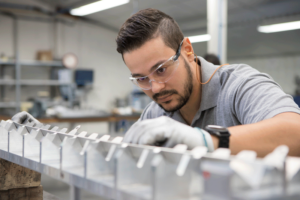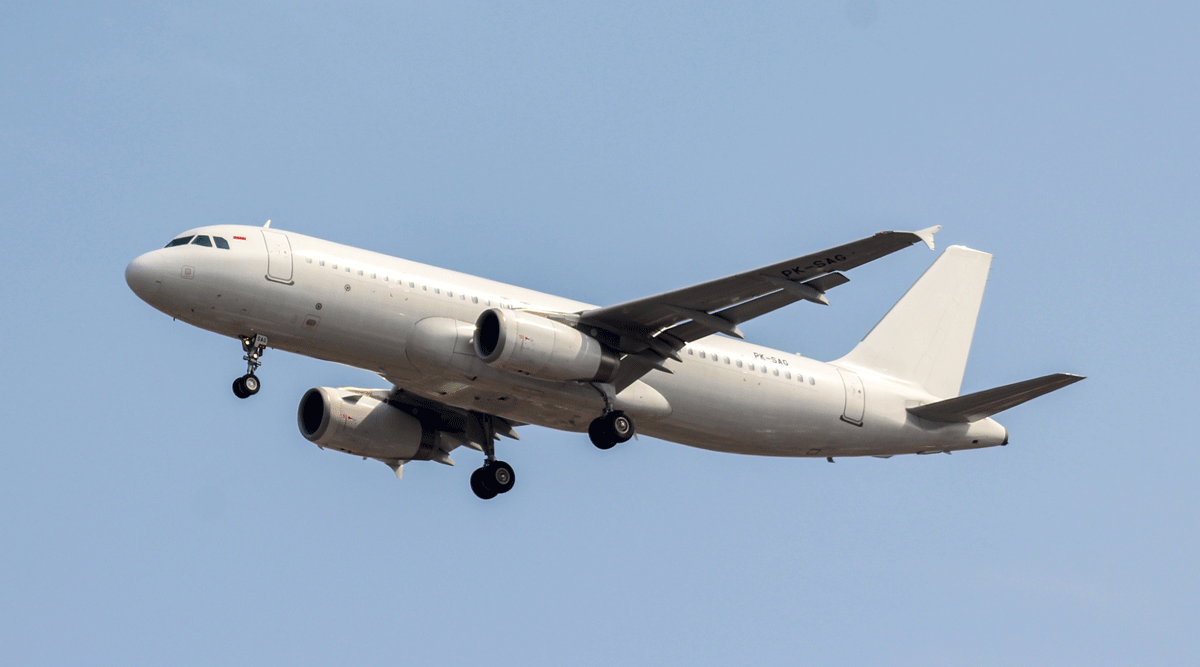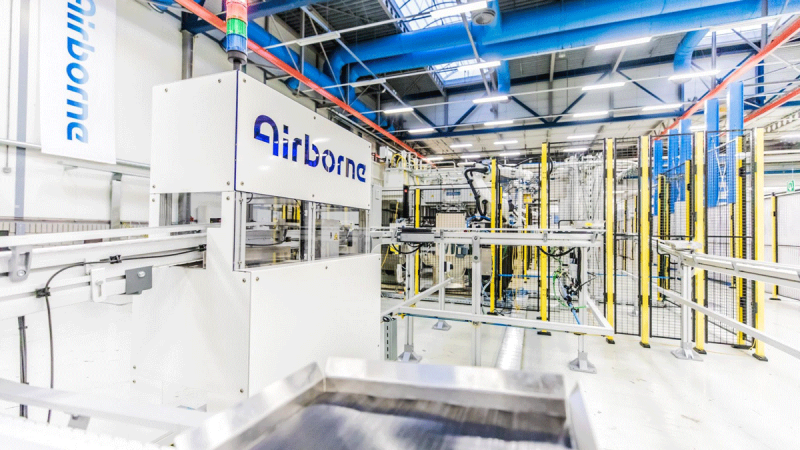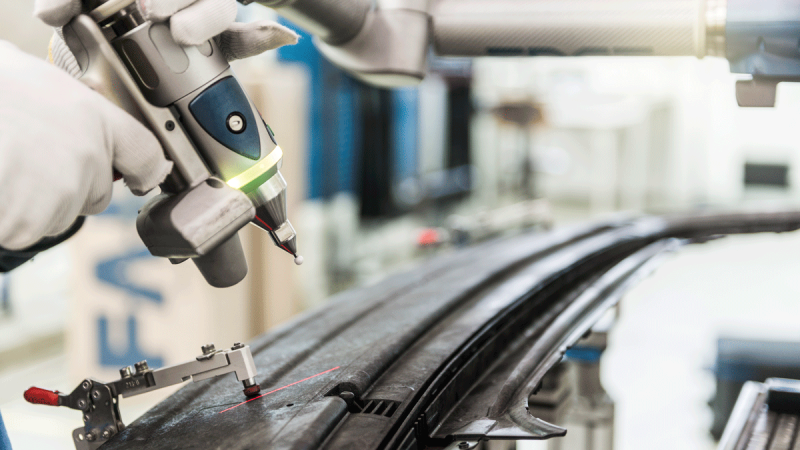When we last spoke with Gardner Aerospace, it was a 2,000-person-strong manufacturer creating detailed parts for the aerospace markets from 14 factories in five countries. Its output ranged from tiny parts a quarter-of-an-inch across to gigantic components more than 20-metres long. It was a firm known for flexibility, adaptability, and reliability, with 85% of its products finding their way into Airbus aircraft.
A lot of that has not changed in the intervening years. But some major things have.
“It has been the greatest crisis aerospace has ever experienced,” says Phillip Visotschnig, the CEO who has taken over leadership of the company since we last looked at Gardner Aerospace. “That sounds big, but bear in mind it is a young industry. Commercial aerospace is probably no more than 30 years old, and Gardner Aerospace itself is 20 years old. It was a significant crisis, but I always point this out to put it in perspective.”
That crisis arrived in the second quarter of 2020 when a runaway pandemic and the restrictions introduced to fight it brought global air travel to a complete standstill. Or at least, that is the common perception.
“There were more aircraft flying in Q2 of 2020 than in Q2 of 1990, in absolute numbers,” Visotschnig points out. “Over the last 20 years, air travel saw incredible growth numbers, and we are now at numbers comparable to 2019 or 2018.”
But while that perspective is valuable, Visotschnig does not underplay just how big an impact Covid had on the aerospace industry in general, and Gardner Aerospace in particular.
“It has been a hell of a rollercoaster,” he admits. “We were completely hibernating activity in 2020 and even 2021, then in 2022 we were ramping up to 30% and then in 2023 we are ramping up again. There has to be a significant growth in volume to come back to 2019 levels, but with Gardner’s level of activity we expect to be there again by 2024 or 2025.”
 On the Runway
On the Runway
That ramp-up has come with its own challenges, including disturbances to the supply chain, shortages of raw materials, and an outflux of talent from the industry as people left the sector and never came back.
“With all humility, our greatest achievement is that we achieved the ramp-up with all that going on,” Visotschnig says.
For that ramp-up to be successful, the industry needs to replace the people it has lost.
“This is difficult, particularly in our traditional footprint in Western Europe,” Visotschnig says. “Very experienced people have left the sector. There was early retirement for some, while younger people are happy with less. We have apprenticeship schemes and open days. We try to attract talent however we can.”
Outside of that traditional footprint, attracting talent is becoming equally vital, if less challenging.
Visotschnig says, “A significant part of our growth is happening overseas in India and other low-cost locations where recruitment is less of a challenge.”
But while the ramp-up might have seemed a long time coming for anyone in the aerospace business, the fact is that once it started a lot of people and businesses were keen for it to happen as quickly as possible.
“There is a lot about anticipation. Anticipation based on trust that the ramp-up would come, Visotschnig says. “Very early in the process we put our faith in the ramp up – that it would come, and that the industry would return to pre-pandemic levels.”
In preparation for when that day would come, early on Gardner sourced materials and kept investing in the business, something it was able to do thanks to continuous cash support and funding.
“Gardner would not have survived without this support,” Visotschnig acknowledges.
 A New Aerospace Industry
A New Aerospace Industry
But the pandemic has done more than put a dent in Gardner Aerospace’s bottom line. It has changed it forever.
“The pandemic has shaped our appearance, our DNA, the way we act,” Visotschnig says. “We have learned to be far more agile, more digital, but also we have used this ramping down of activity to rationalise our footprint, with the objective of getting out of the pandemic stronger than we went in. We are reviewing our product and customer portfolio and want to make the best use of our industrial system. That is the journey ahead of us.”
That journey ahead includes challenges of its own, including some that in their own way are bigger than Covid ever was.
“As an industry, we are facing multiple challenges and the pandemic has accelerated that,” Visotschnig points out. “The industry needs to become carbon neutral as quickly as possible. That is crucial for the industry’s permit to continue operating.”
The International Air Transport Association is committing to zero-emission, carbon-neutral aviation, and aerospace by 2050. That deadline looked very far away in 2019, but today it seems much closer.
“It has very much to do with the consumer perception of aviation,” Visotschnig says. “People learned not to fly, and they appreciate being able to fly again but they understand that emissions, not aviation is the problem. To reduce those emissions, we are seeing initiatives at all levels of the value chain.”
Visotschnig believes that the greatest drivers towards carbon neutrality in the aerospace industry will be the use of sustainable air fuels and more efficient aircraft – which is one of the reasons why that 2050 deadline seems so imminent.
“Those aircraft going into service today, they will be flying in 2050,” he points out.
But with that challenge, comes opportunity.
“We want to have our share in that at Gardner,” Visotschnig says. “There are also OEMs working on zero-emission aircraft such as hydrogen aircraft, but that’s a bit further out. As part of the value chain, we are working on our contribution to a carbon-neutral footprint. We are looking at ways to make all kinds of energy consumption carbon neutral with technologies such as solar panel installations.”
Meeting these challenges is not just critical, or profitable for the aerospace industry. Visotschnig sees it as vital for the entire modern world.
“Aviation is the true internet,” he says. “It is the business that connects people, and people will always want to be connected. We are facing global warming which has significantly accelerated and grown in people’s perceptions. The response to this challenge is the next challenge ahead for the industry.”
There is a long way to go, but Visotschnig is optimistic.
“We are not back to acceptable levels of profitability or a stable business model yet. In the short term, we want to ensure that there is stability and growth. In the mid-term the aerospace and aerostructures industries are all about efficiencies,” he explains. “There is a new generation of aircraft coming. The technology will be available towards the end of the decade and that is when OEMs will choose who to work with.”
Beyond the pandemic recovery, what Visotschnig wants is for Gardner Aerospace to be positioned to supply parts for that technology.
“OEMs will make their choices over who their manufacturing partners are, and we want to be recognised as a reliable partner with the size and significance and industrial capabilities to be a player,” he concludes. “We need to get back on our feet, and then we want to continue to play in the industry.”







